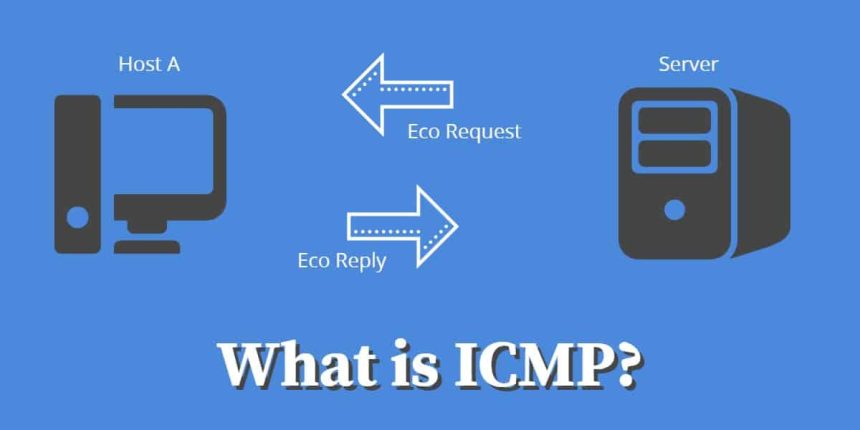What is ICMP?
The Internet Control Message Protocol (ICMP) is an integral protocol within the Internet Protocol Suite. It is primarily utilized for sending error messages and operational information, such as whether a service is available or a host can be reached. ICMP plays a fundamental role in diagnosing network communication issues by providing feedback about problems encountered in data transmission. This feedback mechanism is critical for network administrators to ensure that data packets travel efficiently and correctly between devices across a network. Without ICMP, pinpointing failures in the vast web of connections that compose the internet would be exceedingly difficult and time-consuming.
Common ICMP Message Types
- Echo Request and Echo Reply: Used to check connectivity and calculate round-trip time by the ping command. These messages are fundamental in determining whether a specific host is available on the network.
- Destination Unreachable: Indicates that a packet could not reach its destination, which can help diagnose routing issues. This message informs the sender that the delivery was not successful due to reasons such as the destination network being unreachable, the host being down, or a lack of necessary network security permissions.
- Time Exceeded: Signals that a packet took too long to reach its destination, often used in traceroute operations. This message is crucial for identifying where packets are being delayed or dropped within a network, thus helping administrators to identify and fix bottlenecks.
Role of ICMP in Network Diagnostics
ICMP is indispensable in network diagnostics, as it supports various troubleshooting tools and techniques used by network administrators. Tools like ping and traceroute rely on ICMP to provide insights into connectivity issues. For instance, the ping command aids in calculating the time it takes for communications to travel from an origin host to a destination computer, helping to determine if the target host can be reached. This command sends ICMP Echo Request messages to the destination and waits for Echo Reply messages. The time it takes for these messages to be returned indicates the latency between the two hosts. Similarly, traceroute uses ICMP to map the route data packets take to reach their destination, highlighting where delays or drops occur along the path.
How ICMP Enhances Network Security
ICMP isn’t just for diagnostics, as it also plays a role in network security. For example, ICMP can be used in network security tools to detect and mitigate certain types of attacks, such as ping floods. These attacks involve overwhelming a target with ICMP Echo Request messages, causing a denial-of-service (DoS). By monitoring ICMP traffic, administrators can identify patterns that may indicate malicious activity. This proactive monitoring allows for the swift implementation of countermeasures, such as blocking offending IP addresses or rate-limiting ICMP traffic to prevent network resources from being entirely consumed by malicious actors.
Best Practices for Using ICMP
- Regularly Monitor Network Health: Use ICMP tools to proactively monitor network health and identify potential issues before they become serious. Regular monitoring can reveal trends and patterns in network performance, allowing administrators to address issues such as latency or packet loss preemptively.
- Implement Rate Limiting: Consider Rate-limiting ICMP traffic to lessen the possibility of ICMP-based attacks. This technique controls the amount of ICMP traffic that can pass through the network at any given time, thereby mitigating the risk of DoS attacks that exploit ICMP.
- Utilize ICMP in Conjunction with Other Tools: Combine ICMP with other diagnostic tools for a comprehensive approach to network troubleshooting. For instance, using Simple Network Management Protocol (SNMP) along with ICMP can provide a more detailed network performance analysis. SNMP can gather and organize information about device and network performance, while ICMP can pinpoint where specific issues occur.
Real-World Applications of ICMP
Network administrators often use ICMP to troubleshoot connectivity issues in real time. For instance, when users report slow internet speeds, tracing the issue often begins with ICMP-based tools to identify potential network bottlenecks. Additionally, ICMP is used in building network topology maps, which help in visualizing and monitoring network infrastructure. These maps can illustrate the physical and logical layout of a network, showing how devices are connected and identifying possible points of failure. Furthermore, ICMP plays a vital role in automated systems that require continuous network health monitoring. These systems can automatically alert administrators to unusual patterns in ICMP traffic, such as unexpected outages or performance degradation, enabling swift remediation.
Challenges and Limitations of ICMP
Despite its usefulness, ICMP has limitations. For example, some network devices may block ICMP traffic, making it difficult to diagnose issues accurately. Moreover, ICMP-based tools can be exploited for malicious purposes, such as Denial-of-Service (DoS) attacks. Network administrators must balance the utility of ICMP with the potential security risks. While blocking ICMP can prevent certain types of attacks, it also hinders the ability to use diagnostic tools effectively. Therefore, a nuanced approach that involves selectively allowing ICMP traffic and implementing security measures to detect and mitigate abuse is essential for effective network management.
Conclusion
Understanding the role of ICMP in network troubleshooting is necessary to have a safe and secure network. By leveraging ICMP alongside other network diagnostic tools, administrators can efficiently identify and resolve connectivity issues. Incorporating best practices for ICMP use ensures a proactive approach to network management, ultimately supporting enhanced network performance and security. Regular monitoring, Rate limiting, and the strategic combination of different diagnostic tools can help optimize the use of ICMP, balancing the need for effective troubleshooting with robust security measures. As network environments continue to evolve, the importance of ICMP in maintaining network health and security remains invaluable.
